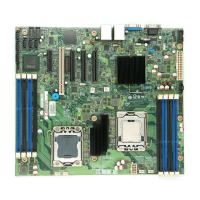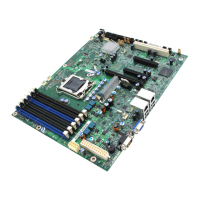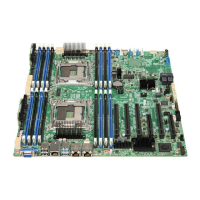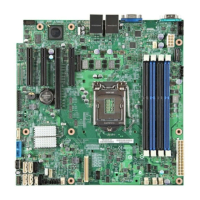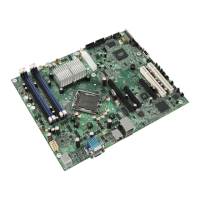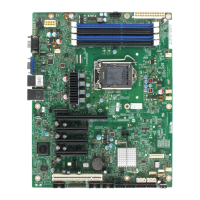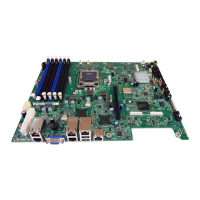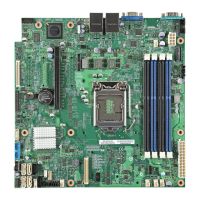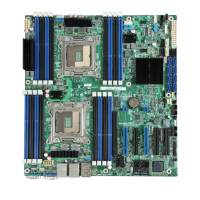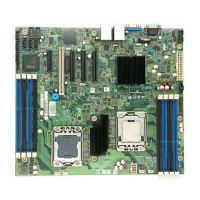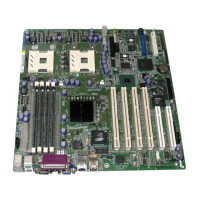Intel® 5000 Series Chipsets Server Board Family Datasheet System Management
Revision 1.1
Intel order number D38960-004
133
4.27 IPMB Communication Interface
The IPMB is a communication protocol that utilizes the 100 KB/s version of an I
2
C bus as its
physical medium. For more information on I
2
C specifications, see The I
2
C Bus and How to Use
It. The IPMB implementation in the BMC is compliant with the IPMB v1.0, revision 1.0.
The BMC both sends and receives IPMB messages over the IPMB interface. Non-IPMB
messages received via the IPMB interface are discarded.
For IPMB request messages originated by the BMC, the BMC implements a response timeout
interval of 60 ms and a retry count of 3.
4.27.1 PCI System Management Bus (SMBus)
BMC access to the PCI SMBus is supported. The BMC supports a form of IPMB messaging on
the PCI SMBus for which the packet format has been modified to help to remove ambiguity
between IPMB and SMBus traffic.
The following differences exist between this modified packet format and the standard IPMB:
The first IPMB checksum is set to 00h.
The second IPMB checksum is replaced with a Packet Error Code (PEC) which is a
CRC-8 error-checking byte.
4.27.2 BMC as I
2
C Master Controller on IPMB
The BMC allows access to devices on the IPMB as an I
2
C master. The following commands are
supported:
Send Message: This command writes data to an I
2
C device as master.
Master Write-Read I
2
C: This command allows the following actions:
- Writing data to an I
2
C device as a master.
- Reading data from an I
2
C device as a master.
- Writing data to I
2
C device as a master, issue an I
2
C Repeated Start, and reading a
specified number of bytes from I
2
C device as a master. Errors in I
2
C transmission or
reception are communicated via completion codes in the command response.
These functions support the most common operations for an I
2
C master controller. This includes
access to common non-intelligent I
2
C devices like SEEPROMs. The Send Message command
is normally used to send IPMB messages to intelligent devices that utilize the IPMB protocol.

